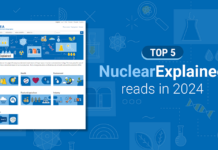NASA Ames Science Directorate Honors Exceptional Contributors: A Spotlight on Four Distinguished Individuals
The NASA Ames Science Directorate recently paid tribute to four remarkable individuals for their exceptional contributions to various NASA missions. The honorees, Sangsavang Stevie Phothisane, Taryn Kavanagh, Dr. Andro Rios, and Hami Ray, exemplify the talent, teamwork, and vision necessary to further NASA’s mission of exploring our planet and beyond. This article delves into their achievements and provides a clear and accessible explanation of their roles and contributions.
—
Earth Science Star: Sangsavang Stevie Phothisane
Sangsavang Stevie Phothisane, serving as the Deputy Project Manager in the Earth Science Project Office (ESPO), has been pivotal in his role as the site manager for the Arctic Radiation-Cloud-Aerosol-Surface Interaction Experiment (ARCSIX). ARCSIX is a critical project aimed at understanding the interactions between radiation, clouds, aerosols, and the surface in the Arctic region. This research is essential for improving climate models and forecasting.
Phothisane’s leadership was crucial during the field campaigns based at Pituffik Space Base in Greenland, a challenging location 750 miles north of the Arctic Circle. The project involved coordinating over 75 scientists and engineers along with three research aircraft. His ability to manage such a complex and logistically demanding project in a remote environment highlights his exceptional organizational and leadership skills.
Good to Know: The ARCSIX project aims to gather data that can help scientists understand how the Arctic environment is changing and what implications these changes might have on global climate patterns.
—
Space Science & Astrobiology Star: Taryn Kavanagh
Taryn Kavanagh, a Research Support Specialist in the Astrophysics Branch, has proven to be an indispensable asset to her team. She excels in her administrative duties, ensuring smooth operations and supporting both internal and external stakeholders. Kavanagh’s dedication goes beyond her job description, often taking on additional responsibilities to facilitate high-level visits and meetings.
Her efforts have significantly boosted morale and fostered goodwill among team members and partners. Such administrative excellence is essential for the efficient execution of scientific missions, as it allows scientists and engineers to focus on their research without being bogged down by logistical challenges.
Good to Know: Administrative support roles like Kavanagh’s are often the unsung heroes of scientific missions. Their work ensures that everything runs smoothly, allowing research teams to focus on their core scientific objectives.
—
Space Science & Astrobiology Star of the Month: Dr. Andro Rios
Dr. Andro Rios, a research scientist in the Exobiology Branch, has made significant strides in building strategic partnerships and fostering educational opportunities through the Science Mission Directorate Bridge Program, now known as MOSAICS. His efforts have secured grant funding for the ASPIRE Program (Astrobiology Scholars Program Immersive Research Experience), which provides two-year internships for under-represented undergraduates to engage in hands-on research with NASA scientists and engineers.
This summer, Dr. Rios successfully led the first cohort of ASPIRE students, providing them with invaluable experience and mentorship. His work not only advances the field of astrobiology but also promotes diversity and inclusion within the scientific community.
Good to Know: The ASPIRE Program is a fantastic initiative that helps bridge the gap for under-represented students, providing them with opportunities to gain practical experience and contribute to NASA’s research efforts.
—
Space Biosciences Star: Hami Ray
Hami Ray has demonstrated exceptional leadership as the Deputy Project Manager for the Lunar Explorer Instrument for space biology Applications (LEIA) mission. This mission aims to study the biological effects of the moon’s extreme environmental conditions on living organisms. Understanding how life can withstand such harsh environments is crucial for future long-term lunar missions and potential colonization.
Ray’s role in process improvement efforts has been instrumental in ensuring the success of the LEIA project. Additionally, she serves as the Deputy Project Manager for the Space Synthetic Biology (SynBio) mission and the Project Manager for the GLOW mission concept, which aims to explore Venus’ upper atmospheric dynamics. Her multifaceted contributions highlight her versatility and commitment to advancing space biosciences.
Good to Know: Missions like LEIA and SynBio are vital for understanding how living organisms can survive and thrive in space, providing essential knowledge for future human space exploration.
—
Conclusion
The NASA Ames Science Directorate’s recognition of Sangsavang Stevie Phothisane, Taryn Kavanagh, Dr. Andro Rios, and Hami Ray underscores the immense value of their contributions to various NASA missions. Each of these individuals has demonstrated exceptional dedication, leadership, and expertise in their respective fields, playing a crucial role in the success of NASA’s scientific endeavors.
Their achievements not only advance our understanding of Earth and space but also inspire future generations of scientists and engineers. The recognition of such talent and commitment is a testament to the collaborative spirit and visionary goals that drive NASA’s mission to explore the unknown and expand human knowledge.
Review and Reactions: The acknowledgment of these individuals has been met with widespread acclaim within the scientific community. Their peers laud their dedication and the positive impact of their work on both current and future projects. Such recognition serves as an inspiration and a reminder of the importance of teamwork and perseverance in the pursuit of scientific excellence.
—
In the ever-evolving field of space exploration, the contributions of talented individuals like Phothisane, Kavanagh, Rios, and Ray are indispensable. Their work not only propels NASA’s missions forward but also paves the way for groundbreaking discoveries and innovations that could change our understanding of the universe.
For more Information, Refer to this article.


































